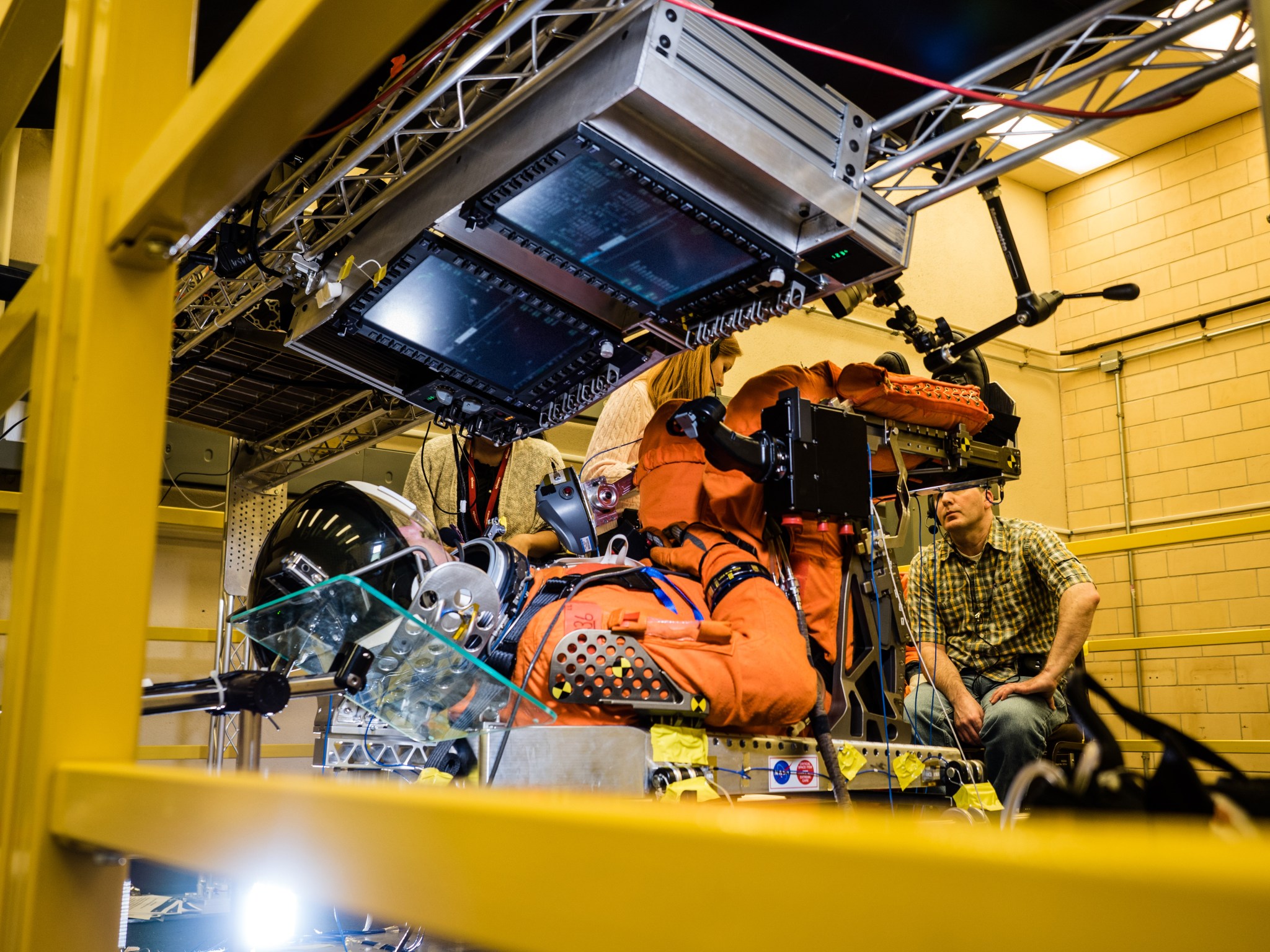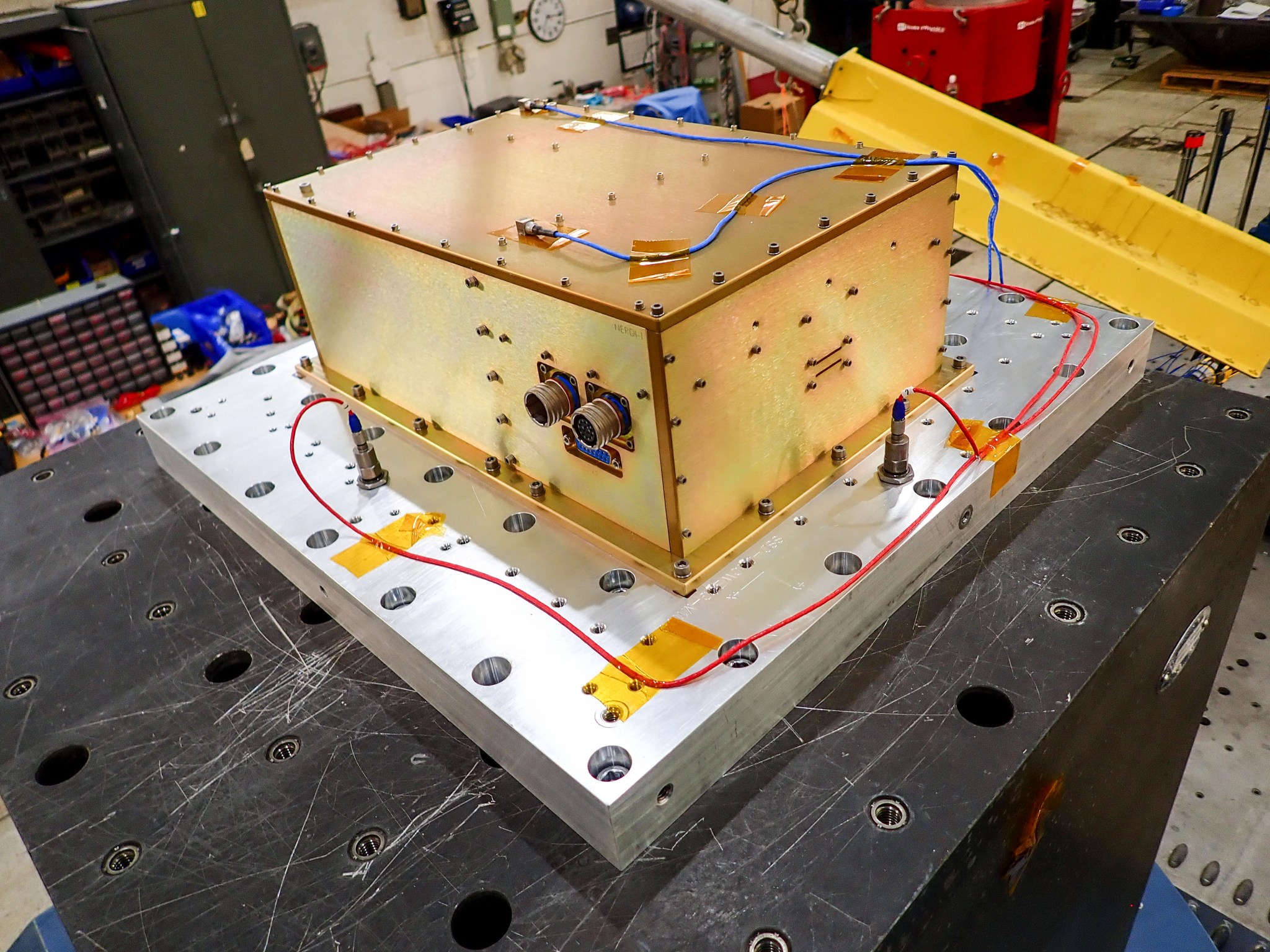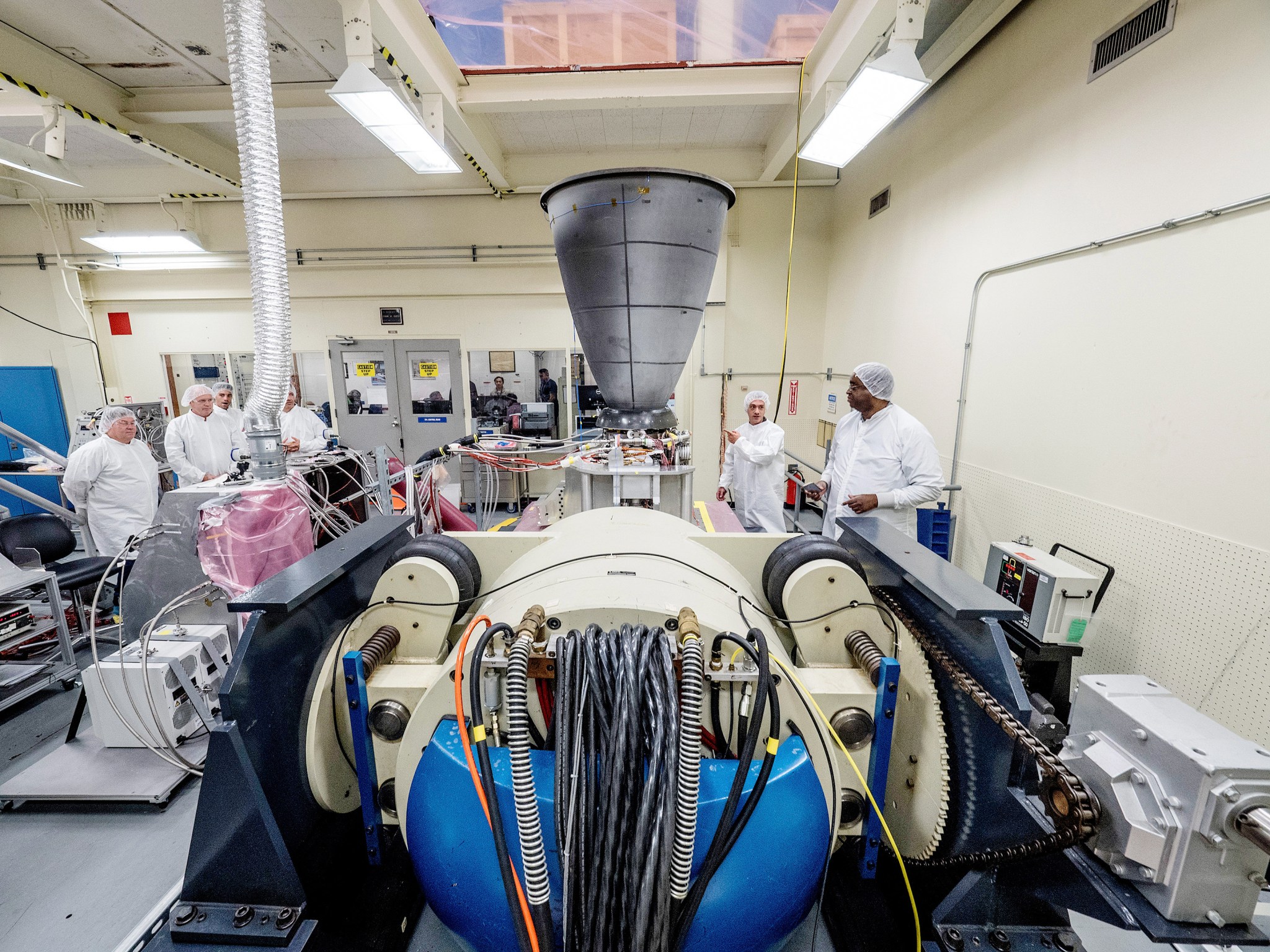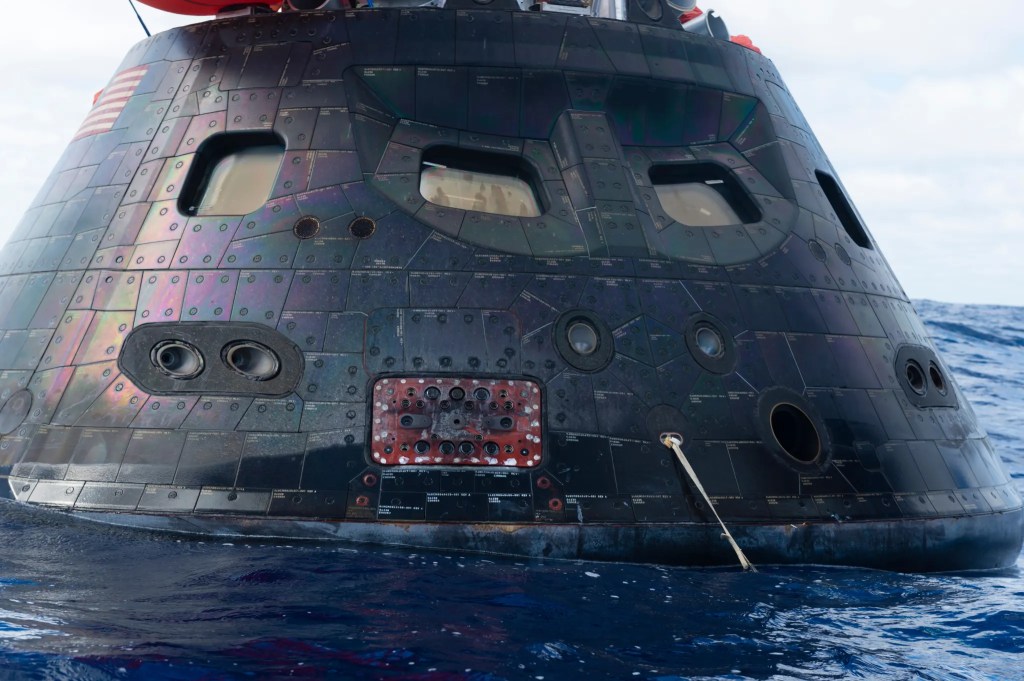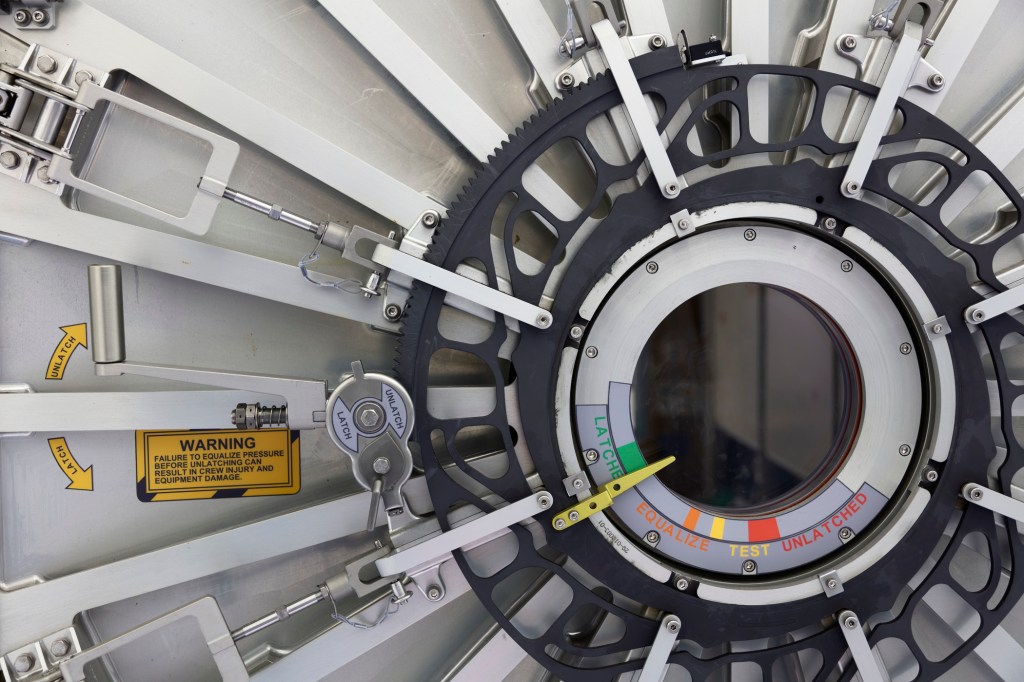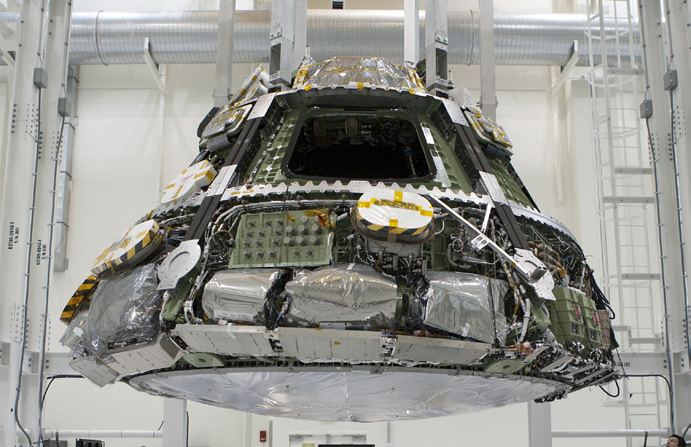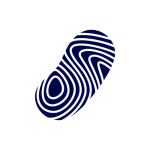Vibration & Shock
Vibration and shock testing are crucial for designing and testing spaceflight hardware to ensure its resilience against the intense and dynamic conditions of launch and space travel. The Johnson Space Center’s Structures Test Facility can provide structural vibration and shock testing of spaceflight hardware to ensure structural integrity and functionality of spacecraft components to guarantee mission success. Explore the capabilities below, as we invite you to join us in the exciting journey of space exploration at the forefront of discovery.
Structures Test Laboratory – Dynamic
Structures Test Facility provides structural vibration and shock testing of spaceflight hardware to ensure that functionality is not impaired by severe launch and landing environments.
Unholtz-Dickie T2000 Horizontal / Vertical
- Force rating (sine) = 25,000 lb.
- Force rating (random) = 23,000 lb.
- Maximum useful frequency = 3 to 3000 Hz
- Maximum acceleration (bare armature) = 220 g vector (peak)
- Maximum Grms is approximately max Accel/3 = 73 Grms
- Rated Velocity = 80 in/sec (sine sweep) 180 in/sec (shock)
- Rated Displacement = 3.0 Inch peak-to-peak
T2000H Payload (test article/test fixture): Approx. 1900 Lbs.
T2000V Payload (test article/test fixture): Approx. 1900 Lbs.
T2000 Slip Table surface: 53.5”x48” with a 43.75”x44” area with 2”x2” hole pattern
T2000 Head Expander surface: 36”x36” with 2”x2” hole pattern
Spectral Dynamics SD26400
- Force rating (sine) = 26,400 lb.
- Force rating (random) = 26,400 lb.
- Maximum useful frequency = 5 to 2400 Hz
- Maximum acceleration (bare armature) = 100 g vector (peak)
- Maximum Grms is approximately max Accel/3 = 33 Grms (actual has generally been less, 23 Grms)
- Rated Velocity = 78.7 in/sec
- Rated Displacement = 2.5 Inch peak-to-peak
26400H Payload (test article/test fixture): Approx. 1600Lbs
26400V Payload (test article/test fixture): Approx. 1600Lbs
26400H Slip Table surface: 47”x47” with a 44”x44” area with 2”x2” hole pattern
26400V Head Expander surface: 48”x48” with a 46”x46” area with 2”x2” hole pattern
4022H Payload (test article/test fixture): Approx. 1100Lbs
4022V Payload (test article/test fixture): Approx. 2050Lbs
4022H Slip Table surface: Overall 60”x60” with a 56”x56” area with 4”x4” hole pattern
4022V Head Expander surface: Overall 54”x54” with a 48”x48” area with 2”x2” hole pattern
Ling 4022 H/V –Horizontal / Vertical:
- Force rating (sine) = 40,000 lb.
- Force rating (random) = 34,000 lb.
- Maximum useful frequency = 5 to 2000 Hz
- Maximum acceleration (bare armature) = 100 g vector (peak)
- Maximum Grms is approximately max Accel/3 = 33 Grms (actual has generally been less, 30Grms)
- Rated Velocity = 70 in/sec
- Rated Displacement = 1.5 Inch peak-to-peak
Ling B335 Shaker System:
- Force rating = 18,000 lb.
- Maximum useful frequency = 5 to 3000 Hz
- Maximum acceleration (bare armature) = 150 g vector (peak)
- Maximum Grms is approximately max Accel/3 = 50 Grms (this has been achieved)
- Rated Velocity = 70 in/sec Rated Displacement = 1.0 Inch peak-to-peak
335V (vertical only) Payload (test article/test fixture): 1500Lbs
335V (vertical only) Head Expander surface: Overall 30”x30” with a 26”x26” area with 2”x2” hole pattern
Particle Impact Noise Detection (PIND)
The Receiving, Inspection and Test Facility (RITF) team maintains Particle Impact Noise Detection capabilities, known as PIND or PIN-D. PIND or PIN-D, is performed to detect loose particles inside a device cavity which could ultimately prevent a failure during a mission.
PIND is a nondestructive test to identify any devices that may have particles such as solder balls that could become dislodged during vibrational loads and cause an internal short.
- Load up to 1 lb.
- Frequency Range: 40Hz to 130Hz
- Vibration Range: 10g to 20g























